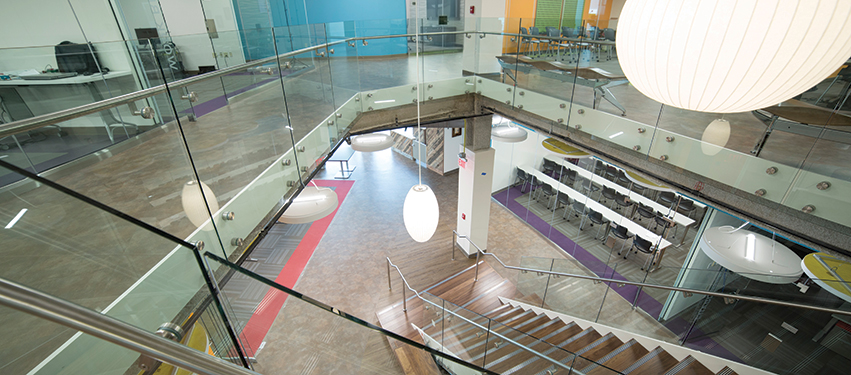
Patients may not notice all the innovative activity taking place, but they will certainly benefit from its outcomes.
Health systems and providers across the nation are developing programs to adapt to the changes and forces disrupting healthcare. For OSF HealthCare, this has meant the recent launch of OSF Innovation, a strategy aimed at creating a culture where all mission partners feel they have the ability and responsibility for change… to be Innovators for Life.
OSF is no stranger to innovative practices. The first transfer of a patient by helicopter in central Illinois took place as a result of a caregiver who was one of The Sisters from the Third Order of St. Francis in 1967. The OSF Healthcare System was an early adapter of telehealth by developing a hub for intensive care unit doctors and nurses to help monitor patients using video conferencing technology. OSF HealthCare is among the first to come up with a refined process for converting traditional medical images of pediatric hearts into digital formats for 3D printing. OSF Innovation aims to encourage these types of innovative ideas across the organization
What is OSF Innovation?
OSF Innovation is the combination of all innovation activities across the Ministry of OSF HealthCare. The purpose is to transform healthcare by creating and adopting techniques and technologies that make every aspect of care more efficient and effective.
The OSF Innovation strategy has three components: internal innovations, partnering with external entities, and validating innovations through simulation. Our ongoing and comprehensive commitment to innovation includes an initiative to transform our model of care in primary care clinics by putting patients at the center of their care and expanding access, reducing costs and increasing efficiency. OSF is partnering with outside entities to find revolutionary solutions and products in which we can invest. The establishment of the world-class Jump Simulation center allows us to develop and assess internal and external solutions in healthcare.
Beyond that, OSF will continue to be proactive in developing creative ideas to better meet the needs of our patients. Jump is becoming the central hub for innovative projects at OSF and will house various divisions of the health system on the third and fourth floors. OSF is also bringing in project managers and design thinkers in healthcare to help teams see new approaches to problems they are tackling.
The collaborative work space at Jump will allow these cross-disciplinary groups to come together quickly to generate ideas, test them through simulation, vet them and rapidly deliver solutions to patients. It is our belief that placing these teams in one location will enhance our efforts to continually innovate and advance the strategic goals of OSF to improve care and reduce costs.
How will OSF Innovation impact patients?
While patients will likely not notice all the innovative activity taking place within OSF, they will certainly benefit from the outcomes of that work. In the near-future, we will focus on disease prevention to improve the quality of life of patients, rather than on medical interventions and solutions. The Ministry expects to adopt new home health solutions to keep patients from being readmitted into hospitals, and OSF will adopt software to customize patient care. Overall, the changes the organization is making will improve patient experience, reduce costs, expand the populations served and maintain the health of our communities. iBi
Denise Molina-Weiger is Writing and Media Relations Coordinator for OSF HealthCare.

